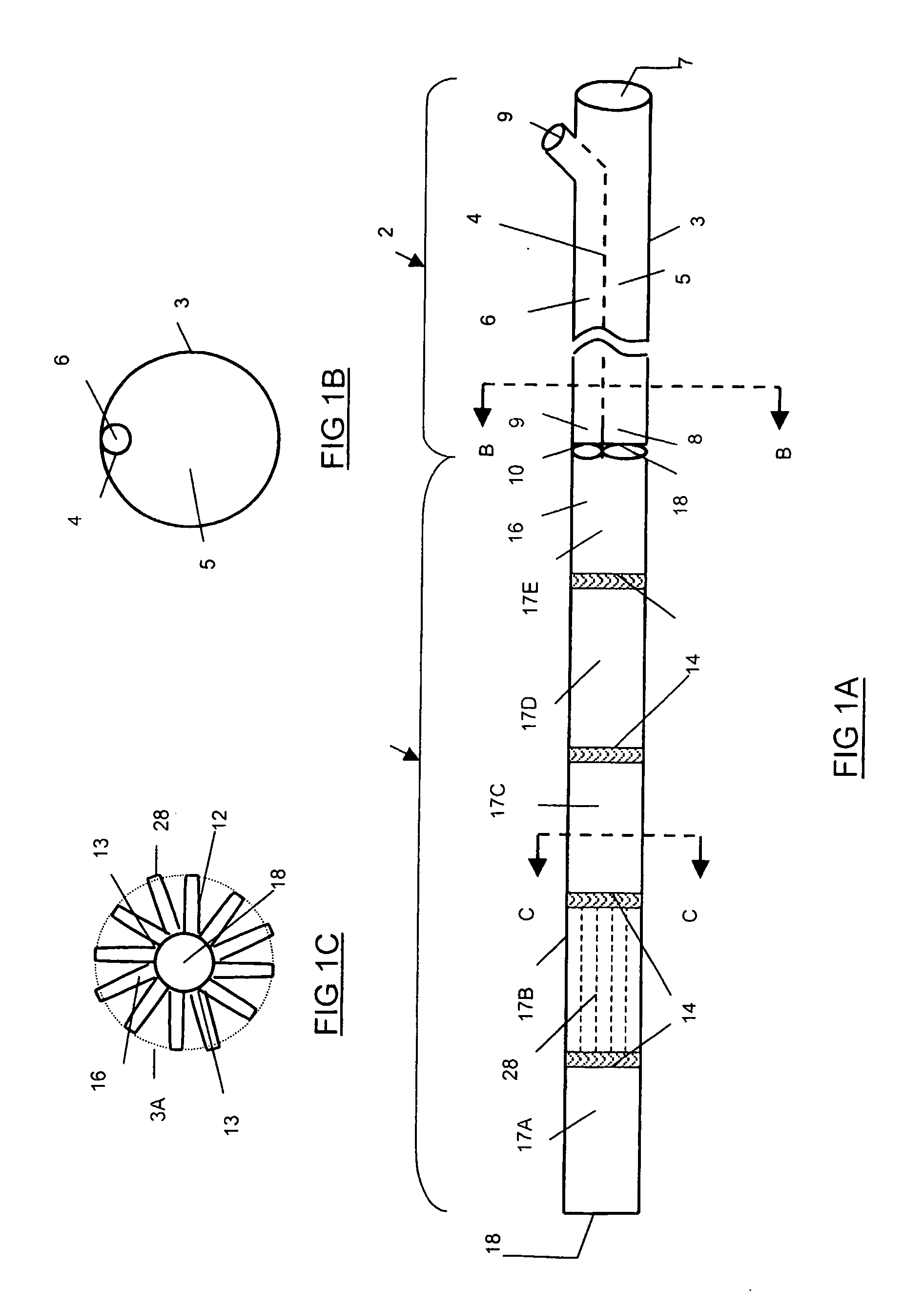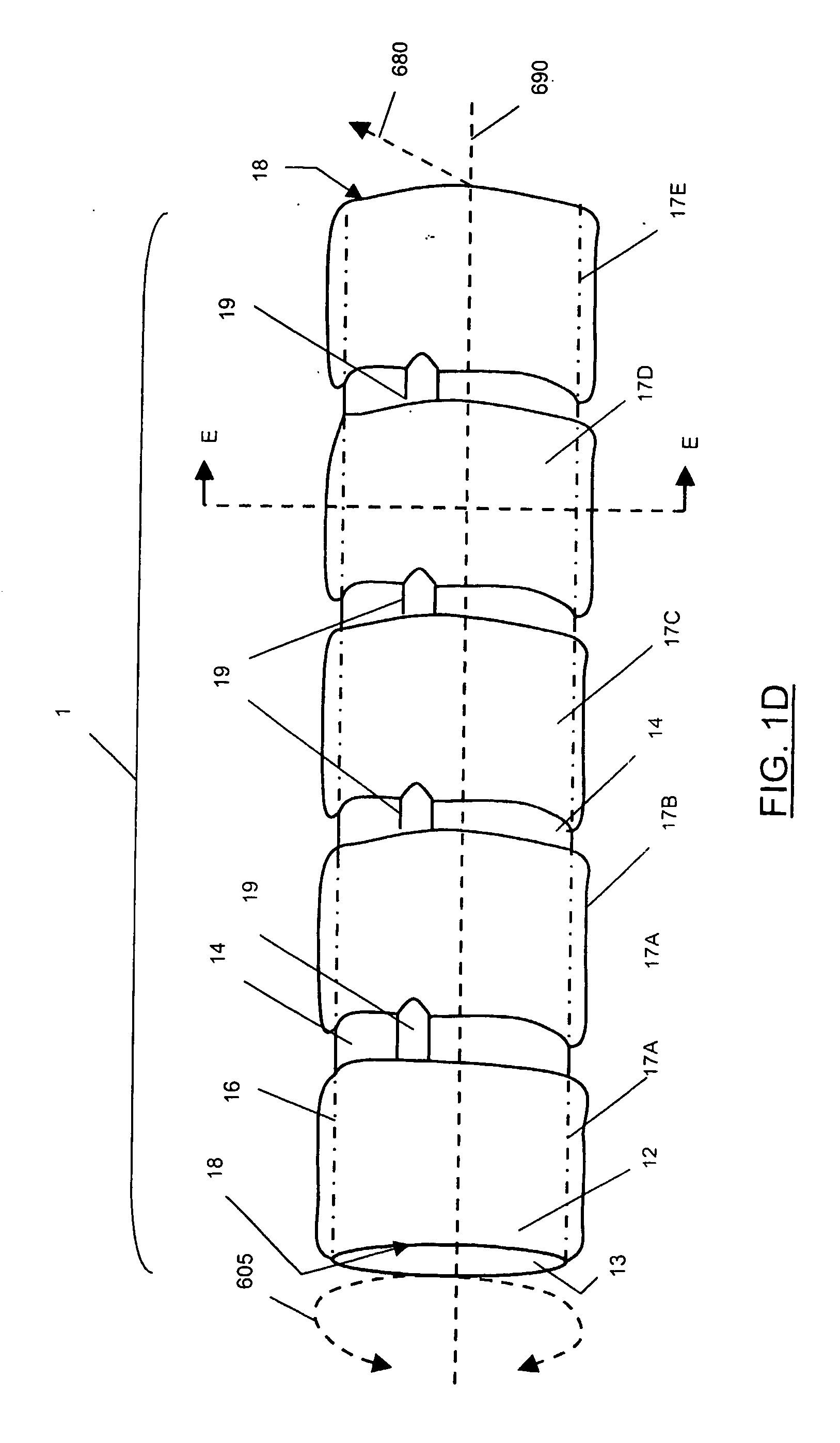Endovascular balloon graft
a balloon and endovascular technology, applied in the field of endovascular balloon grafts, can solve the problems of balloon itself obstructing the lumen of the artery, balloons are not suitable for permanent placement, and the device such as angioplasty balloons are unsuitable for permanent placement, so as to facilitate secure placement within the intended portion, minimize disruption or irritation of the lumen, and reduce the risk of injury
- Summary
- Abstract
- Description
- Claims
- Application Information
AI Technical Summary
Benefits of technology
Problems solved by technology
Method used
Image
Examples
Embodiment Construction
[0024] The above general description and the following detailed description are merely illustrative of the subject invention and additional modes, advantages and particulars of this invention will be readily suggested to those skilled in the art without departing from the spirit and scope of the invention.
[0025]FIG. 1A illustrates the system of the invention, being composed of a distal segment 1, which represents the expandable graft and a proximal segment 2, which represents the delivery catheter. The catheter 2 has a double lumen shaft 3. FIG. 1B illustrates a cross sectional schematic of the catheter at a vector arrow BB in FIG. 1A. As shown in FIGS. 1A and 1B, the larger lumen 5 has an aperture proximally 7, and opens distally 8 into the lumen 18 of the distal segment that provides an artificial flow path for the body lumen. Through this lumen, a guiding wire (not shown) can be inserted to facilitate proper positioning of the graft at the desired location in the cerebral or per...
PUM
 Login to View More
Login to View More Abstract
Description
Claims
Application Information
 Login to View More
Login to View More - R&D
- Intellectual Property
- Life Sciences
- Materials
- Tech Scout
- Unparalleled Data Quality
- Higher Quality Content
- 60% Fewer Hallucinations
Browse by: Latest US Patents, China's latest patents, Technical Efficacy Thesaurus, Application Domain, Technology Topic, Popular Technical Reports.
© 2025 PatSnap. All rights reserved.Legal|Privacy policy|Modern Slavery Act Transparency Statement|Sitemap|About US| Contact US: help@patsnap.com



